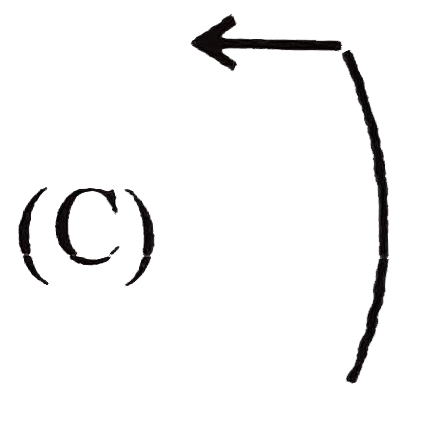A plane wavefront is incident on a concave.mirror of radius of curvature R. The radius of the reflected wavefront will be :
2R
R
R/2
R/4
To solve the problem of finding the radius of the reflected wavefront when a plane wavefront is incident on a concave mirror of radius of curvature R, we can follow these steps:
1. Understand the Incident Wavefront:
- A plane wavefront is a set of parallel lines representing the phase of the wave. When it strikes the concave mirror, it will reflect off the surface.
2. Identify the Properties of the Concave Mirror:
- The radius of curvature R of the concave mirror is the distance from the mirror's surface to its center of curvature, which is located behind the mirror.
3. Determine the Focus of the Concave Mirror:
- The focal point F of a concave mirror is located at a distance f from the mirror, where the relationship between the focal length and the radius of curvature is given by:
f=R2
4. Reflection of the Wavefront:
- When the plane wavefront strikes the concave mirror, it reflects and converges towards the focal point F. The reflected wavefront will be spherical in nature as it converges at the focus.
5. Radius of the Reflected Wavefront:
- The radius of curvature of the reflected wavefront is equal to the distance from the mirror to the focal point. Since we have already established that:
f=R2
- Therefore, the radius of the reflected wavefront is also:
R′=f=R2
Final Answer:
The radius of the reflected wavefront will be R2.
- A plane wavefront is a set of parallel lines representing the phase of the wave. When it strikes the concave mirror, it will reflect off the surface.
- The radius of curvature R of the concave mirror is the distance from the mirror's surface to its center of curvature, which is located behind the mirror.
- The focal point F of a concave mirror is located at a distance f from the mirror, where the relationship between the focal length and the radius of curvature is given by:
f=R2
- When the plane wavefront strikes the concave mirror, it reflects and converges towards the focal point F. The reflected wavefront will be spherical in nature as it converges at the focus.
- The radius of curvature of the reflected wavefront is equal to the distance from the mirror to the focal point. Since we have already established that:
f=R2
- Therefore, the radius of the reflected wavefront is also:
R′=f=R2
The radius of the reflected wavefront will be R2.
Topper's Solved these Questions
Similar Questions
Knowledge Check
A plane wavefront AB is incident on a concave mirror as shown. Then,the reflected wavefront will be
 A
A B
B C
C DNone of these
DNone of theseA plane wavefront AB Is incident on a concave mirror as shown .Then,the wave front just after reflection is -
 A
A B
B C
C Dnone of these
Dnone of theseThe focal length (f) of a spherical mirror of radius of curvature R is
ARBR2C3R2D2R
The focal length of a concave mirror with radius of curvature 12 cm is
View SolutionWhen a plane wave front incident on a concave mirror as shown in figure then shape of reflected wave front just after reflection :-

View SolutionA ray of light is incident on a concave mirror. If it is parallel to the principal axis, the reflected ray will
View SolutionThe redius of curvature of a plane wavefront
View Solution_E01_077_Q01.png)
Huygen was the figure scientist who proposed the idea of wave theory of light he said that the light propagates in form of wavelengths. A wavefront is a imaginary surface of every point of which waves are in the same. phase.
For example the wavefront for a point source of light is collection of concentric spheres which have centre at the origin w1 is a wavefront w2 is another wavefront.
The radius of the wavefront at time 't' is 'ct' in thic case where 'c' is the speed of light the direction of propagation of light is perpendicular to the surface of the wavelength. the wavefronts are plane wavefronts in case of a parallel beam of light.
_E01_077_Q02.png)
Huygen also said that every point of the wavefront acts as the source of secondary wavelets. The tangent drawn to all secondary wavelets at a time is the new wavefront at that time. The wavelets are to be considered only in the forward direction (i.e., the direction of propagation of light) and not in the reverse direction if a wavefront w1 and draw spheres of radius 'cΔt' they are called secondary wavelets.
Draw a surface w2 which is tangential to all these secondary wavelets w2 is the wavefront at time t+Δt Huygen proved the laws of reflection and laws of refraction using concept of wavefront.
Q._E01_077_Q03.png)
Plane are incident on a spherical mirror as shown in the figure. the reflected wavefronts will be
View Solution
